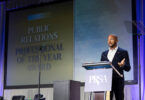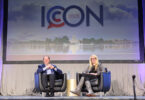Online sweepstakes, contests and giveaways have become popular marketing tactics for companies and brands. Some of these are designed simply to drive more traffic to Facebook and Twitter pages — “low-value likes,” as my Ketchum colleague Ben Foster likes to say. The best of these promotions drive greater dialogue and deepen relationships with a company’s product or services.
Whatever the goal, any intended goodwill can quickly erode when online promotions don’t meet expectations. Increasingly, prize-rigging is becoming one of the underlying causes for these problems.
Prize-rigging (my term, first time I’m sharing it) is the manipulation of an individual’s chance of winning an online sweepstakes, contest or giveaway.
There seems to be a growing cottage-industry of prize-rigging techniques that are being shared online by self-defined “hobbyists” of online promotions. To highlight a few of these sites, check out: www.contestmob.com, www.sweepsadvantage.com and http://forums.online-sweepstakes.com/.
These communities may not be doing anything illegal. It’s debatable if their approaches are unethical. However, once exposed, prize-riggers can certainly leave a bad taste in the mouths of the majority of entrants who enter normally and individually, and thus have much less of a chance of winning.
There seem to be several types of prize-riggers:
- Vote-swappers. “You vote for me in contest A and B, and I’ll vote for you in sweepstakes X and Y.” This may be a great tactic for those swapping votes, but not for the rest of the contestants. Things can get especially ugly when vote-swappers publicly argue after results are posted … dragging the whole essence of the promotion down into the mud with them.
- Code-swappers. “Please post the required-entry code here for contest A, and I’ll give you the codes you need for giveaway Z.” This behavior circumvents a company’s ability to track and forecast the number of potential entrants to a promotion, which can sometimes lead to a promotion’s website slowdown or quicker-than-expected expiry of available product.
- Aggregators. “Stop by my website every day and I’ll list the best five promotions for you to enter.” These types of communities foster an increase-your-winning-percentage attitude and treat all promotions as commodities, often at the expense of entrants that may have a great affinity for a brand, product or service.
- Prize-sharers. “Vote for me! I will share $10 of my $50 contest gift card with one lucky person, chosen at random!” Again, great for the prize-riggers; bad for everyone else.
PR practitioners often pair with their marketing siblings to construct and administer these promotions. However, when prize-riggers cause things to go south, it’s often the PR team that has to help pick up the pieces.
Here are some tips for PR pros to consider before being involved in launching the next giveaway, sweepstakes or contest:
1) Align promotions with business goals. When there are low barriers to enter a promotion, it puts chum in the water for prize-riggers. Perhaps the first step is to avoid mining for low-level ‘Likes’ in the first place since there’s nothing stopping those folks from un-friending/un-following once a promotion ends. Instead, find ways to get contestants to interact with the brand, or sample the product or service. Encourage dialogue and interaction through the promotion. Make it fun and engaging.
2) De-commoditize the criteria for success. Consider more qualitative (“panel of outside judges select winner!”) versus quantitative (“most votes wins”) metrics to pick promotion winners. Eliminate or establish unique-user entry codes. In the end, it may be impossible to completely neutralize prize-riggers, but at least try to level the playing field for individual entrants by establishing unique ways to win a prize or earn a giveaway.
3) Prepare for “winner blowback.” All promotions have the potential to conclude with frustrated and empty-handed entrants that may publicly grouse about the promotion. PR pros should always consider building scenario plans with advance thinking on how to respond to a variety of situations, including: promotion mishaps, faster-than-expected depletion of giveaway prizes, allegations of cheating and/or other types of blowback directed at the winners.
James Donnelly is a member of the PRSA Charlotte Chapter and a senior vice president, crisis management, at Ketchum. He shares his thoughts on crisis management and communications training at JamesJDonnelly.com.







[…] […]
@jamesjdonnelly:twitter Thanks, JD. Here’s another good article w/ tips for successful Facebook contests & avoiding vote riggers: http://bit.ly/rs46HO #Ketchum
I recall seeing instances of “prize-rigging” during the recent (and now finished) return of McDonald’s Monopoly. There are a plethora of web forums dedicated to the trading, sharing and even buying of different monopoly pieces players needed to win. These code-swappers were dedicated to attempting to cheat the promotion and gain regional advantages as it is rumored that McDonald’s places different pieces in different markets. While it is most likely nearly impossible to stop this from happening completely, this post makes me believe that McDonald’s could have benefited from monitoring these sights and at the very least come up with a scenario pending any “winner blowback”. Someone could very easily choose to come forward to claim that the contest was unfair as the trading/buying of pieces occurred and it would be important for McDonald’s to have a plan set up with how they may deal with this situation. There may even be a solution as simple as changing the pieces themselves. Adding a barcode could at least provide information when scanned on the place and time that the piece was bought, giving McDonald’s feedback on just how many pieces were most likely traded and how many were originally bought.
PRSA’s long overdue effort to update the definition of public relations should compel a parallel update of its Accreditation program, without which this credential fails in conveying true contemporary relevance and value as a predictive benchmark of a professional’s skills and knowledge. To start: experts in social media and measurement exist within our networks but require more emphasis in the program and its learning bibliography. Will the Universal Accreditation Board, with PRSA, at long last put this issue onto a fast-track to refresh the APR to reflect the way we communicate in 2011? I’ll raise my hand along with other colleagues from the PRSA Boston Chapter to help, much as I did a few years ago to write the first externally-directed explanation of APR that was other than ‘inside ball.’ Urgency must trump bureaucracy to make the APR more than a dated 3-hour rehash a baseline college curriculum.
Then we can add some narrative to the Wikipedia posting and website along these lines:
Public relations practitioners are required to be astute
listeners as well as effective verbal and written communicators. They apply
research findings to proven communications activities aligned to predictive
behavioral response by the stakeholders most relevant to the organization or
cause for which they advocate. Those practitioners (aka advisors, consultants,
counselors) that elect to provide customer assurance as to their verified public
relations knowledge, ethics and skills can attain a tested professional
certification, called Accreditation, by the Public Relations Society of America,
earning the designation APR which thereafter must be maintained through
continuing education and industry service.
P.S: Agree that the ‘field’ format is very limiting. Keith, please provide and post an alternate email to which those of us who penned definition options can contribute.
Thanks for your feedback and perspective, Loring.
As for the points you raise regarding the APR, I will direct you to address those directly with the Universal Accreditation Board, which has oversight of the APR program. PRSA, while a member of UAB, does not administer the APR program nor have managerial oversight of it; that falls to the UAB. You can address your concerns with the UAB Board via its website: http://www.praccreditation.org/index.html
Finally, regarding detailed definitions of public relations: It’s worth noting that what we are seeking through the “Public Relations Defined” initiative is a dictionary-like definition of public relations, one that is universal in its scope, but also brief in copy, as definitions are typically written in dictionaries. Certainly, there is room for more detailed definitions in textbooks and the like, but the submission field is somewhat limiting for a reason: to develop a dictionary-like definition that fits within the context of how common words and phrases are defined in dictionaries.
Having said that, please feel free to submit more detailed definitions directly in this comments section. We will capture any and all definitions left in the comments, along with the more than 600 submissions we have received thus far via the submission field, and use that data in the deliberation of the three draft definitions that we will put up before the profession for a public vote.
Should you like to submit anything privately, you can email me directly at keith.trivitt@prsa.org.
Keith Trivitt
PRSA
As I note below to Loring Barnes, and have told others on Twitter and elsewhere in the blogosphere, it’s worth noting that the type of definition this initiative seeks to develop is akin to what one would find in a dictionary for most commons words and phrases. That is, concise and brief (i.e., approx. one sentence) with a prescribed sentence structure that can be universally applied. Certainly, more detailed definitions can be elaborated upon in textbooks and the like, but when one looks at definitions for other communications functions (marketing, advertising, branding, etc.), they are typically concise and fitting within the following sentence structure:
they [DO WHAT] with/for [WHOM] to [DO WHAT] for [WHAT PURPOSE].
Two examples (from Wikipedia) that participants of the Definition of Public Relations Summit, held Sept. 29 at PRSA’s New York headquarters) used to form this submission field were marketing and advertising, which are defined as such:
“Marketing is the process used to determine what products or services may be of interest to customers, and the strategy to use in sales, communications and business development.” (http://en.wikipedia.org/wiki/Marketing)
“Advertising is a form of communication used to persuade an audience (viewers, readers or listeners) to take some action with respect to products, ideas, or services.” (http://en.wikipedia.org/wiki/Advertising)
Keith Trivitt
PRSA
Public relations applies stakeholder engagement as a leadership strategy, benefiting organizations and those they affect.
“The engineering of intent” – that short enough for everybody?
…all apologies to Eddie.
Cisco’s definition of PR for @PRSA:twitter:
“Public Relations is knowing what to say; when to say it; how to say it; where to say it; whom to say it to, to promote and protect the client’s reputation.”
Full thoughts and blog here: http://blogs.cisco.com/news/ciscos-definition-of-public-relations/
My definition: “Public relations is a strategic process of communicating, engaging, and
collaborating with stakeholder communities to build relationships in an
ethical, transparent and authentic manner for the benefit of both the
organization and its stakeholders.
Public relations INFORMS with AIM to INCREASE PROFITS for CLIENT.
Public relations is the art of influencing and managing
public perception for individuals, organizations and social communities through
strategic interactive communication and relationship-building to increase
awareness and meet long-term business goals.
manners, comprehension
manners and human diversity comprehension
public relations definition should include social mores, cultural diversity comprehension.
Motivates positive communication on behalf of clients
Public relations is a strategic organizational process that develops and maintains relationships with key stakeholders that benefit both parties.
Public Relations is a pro-active positive effort to act to resolve an inherent conflict of interests between an institution/group/organization and its various publics who pull towards their own interests so as to work in the ultimate well being of individuals and human society for existence in the world in terms of economics,socialism,world view and freedom and voerall maintain individual dignity,honour in every situation of life.
Sudhakar D. Joshi